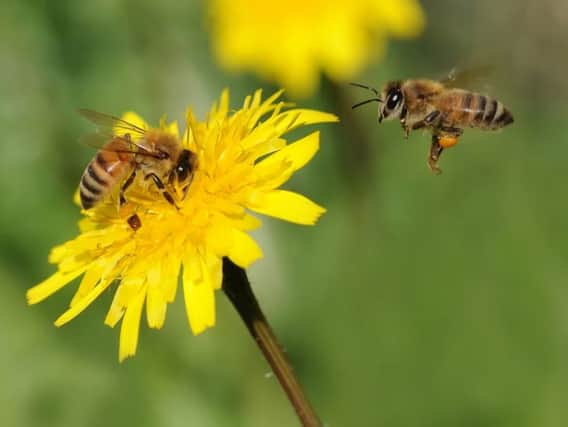One in three bumblebee species in decline


Climate change and habitat loss has led to a declines in an alarming third of the 260 existing types - including the UK's muscorum and distinguendus, say scientists.
Ones with narrow ranges are especially vulnerable along with those where no pathogens have been reported, meaning they have less resistance to infection.
Advertisement
Hide AdAdvertisement
Hide AdBiologist Dr Marina Arbetman, of the National University of Rio Negro, Argentina, said: "Patterns and causes of bumblebee decline have frequently been reported at a regional scale.
"But to our knowledge, this is the first global analysis within the genus."
Bumblebees are the wild cousin of the honey bee, responsible for pollinating a range of fruits and vegetables in the UK including raspberries, potatoes and tomatoes.
They are also key to a number of rare flowers including fox gloves, honey suckle and a range of wild orchids that cannot be pollinated by other insects.
Advertisement
Hide AdAdvertisement
Hide AdMany of the plants and flowers that are so distinctive to the British countryside rely on the bumblebee for pollination including lupins, heather and poppies.
There are lots of plant species out there which will never produce offspring without the bumblebees to fertilise them.
There has been growing concern about the decline of bees around the world because loss of habitat, climate change and disease.
Until relatively recently, the British countryside was much more colourful.
Advertisement
Hide AdAdvertisement
Hide AdDr Arbetman said: "We conclude bumblebee evolutionary history and associated genetic diversity could be deeply eroded if the threatened clades, especially Thoracobombus and Cullumanobombus, become extinct.
"A reduction in phylogenetic diversity could be expected to affect evolutionary potential to cope with ongoing global change, also impairing current and future biodiversity uses derived from evolutionary processes."
The study assembled a database of about 43 per cent of the globally known species which included species extinction risk assessments following IUCN Red List categories.
Dr Arbetman said: "Overall, about one third of the assessed bumblebees are declining and declining species are not randomly distributed.
Advertisement
Hide AdAdvertisement
Hide Ad"Susceptible species were overrepresented in the subgenus Thoracobombus (approx. 64 per cent) and underrepresented in the subgenus Pyrobombus (approx. 6 per cent)."
The results published in Proceedings of the Royal Society B suggest the current bumblebee decline could have economic, ecological and evolutionary implications.
Dr Arbetman said: "In terms of traits, particularly vulnerable are those bumblebee species occupying small geographical ranges.
"Also, species were none of the three most common internal parasites have been reported, were more prone to decline than those species harbouring at least one of these pathogens.
Advertisement
Hide AdAdvertisement
Hide Ad"This pattern could indicate reduced tolerance to infection in declining species, compared to non-declining species, but undoubtedly, further studies are
needed to disentangle the meaning of this association."
She said: "Conservation biology can profit greatly from incorporating a phylogenetic perspective into analyses of patterns and drivers of species extinction risk.
"We applied such approach to analyse patterns of bumblebee decline."
Added Dr Arbetman: "The habitat of species with restricted distribution should be protected and the mechanisms to deal with pathogen infection needs urgent research."